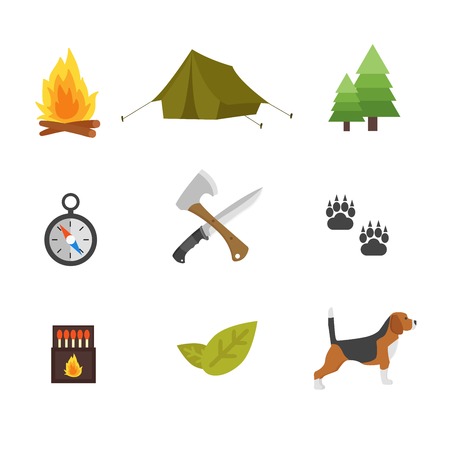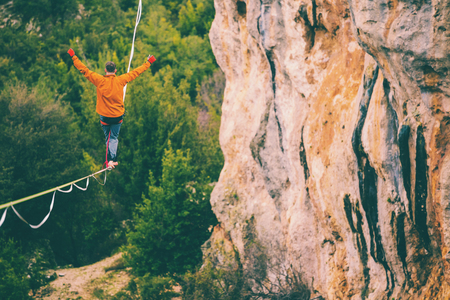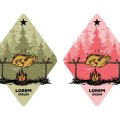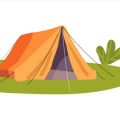Understanding Potential Emergencies in the Great Outdoors
Before you head out for a camping trip with your family, it’s important to know what kinds of emergencies can happen in the American wilderness. Being prepared starts with understanding the risks you might face. Here’s an overview of the most common emergencies families encounter while camping in the U.S.
Severe Weather Events
The weather can change quickly when youre outdoors. Thunderstorms, flash floods, high winds, and even unexpected snowstorms can put campers at risk. Always check the forecast before you leave and be prepared to adjust your plans if severe weather is on the way.
Wildlife Encounters
From bears to snakes to raccoons, wildlife is part of the camping experience in America. While most animals want to avoid humans, surprise encounters or improper food storage can lead to problems. It’s important to know which animals live in your camping area and how to keep your campsite safe.
Injuries and Medical Emergencies
Minor cuts, burns, sprains, and insect bites are common while camping. In more serious cases, there could be broken bones or allergic reactions. Knowing basic first aid and having a well-stocked kit can make a big difference if someone gets hurt far from help.
Getting Lost
The vastness of national parks and forests means it’s easy to get turned around, especially for kids. Losing cell service is common in remote areas, so it’s vital to have a plan in case someone gets lost. Teaching family members basic navigation skills helps everyone stay safe.
Common Camping Emergencies Table
| Emergency Type | Examples | Prevention Tips |
|---|---|---|
| Severe Weather | Thunderstorms, flash floods, sudden cold snaps | Check forecasts, bring proper gear, set up camp away from flood-prone areas |
| Wildlife Encounters | Bears at campsite, snake sightings, raccoons in food supplies | Store food properly, keep campsite clean, know local wildlife safety tips |
| Injuries & Medical Issues | Cuts, burns, allergic reactions, sprained ankles | Carry a first aid kit, know basic first aid, supervise children closely |
| Getting Lost | Losing trail markers, wandering off campsites, poor visibility conditions | Stay on marked trails, use maps/GPS/compasses, establish meeting points |
Why Understanding These Risks Matters
Knowing about these potential emergencies helps families feel confident and prepared. When everyone understands what could go wrong—and how to handle it—camping becomes safer and more enjoyable for all.
2. Communication Plans and Emergency Contacts
Why Reliable Communication Matters
When you’re out camping, especially in remote areas, cell service can be spotty or nonexistent. That’s why it’s important for every family to set up a solid communication plan before heading out. Having a plan keeps everyone safe and ensures that if something goes wrong, help can find you quickly.
How to Establish Reliable Communication Methods
Start by checking your campground or trail’s cell coverage using provider maps or online forums. If coverage is poor, consider these options:
- Walkie-talkies/Two-way radios: Great for keeping in touch with your group within a few miles.
- Satellite phones: Useful for emergencies in areas with no cell signal.
- Personal locator beacons (PLBs): These devices send your location to emergency responders when activated.
Communication Method Comparison
| Method | Range | Best For |
|---|---|---|
| Cell Phone | Where coverage exists | General use, check-ins |
| Walkie-Talkie/Radio | A few miles | Group coordination onsite |
| Satellite Phone | Anywhere with sky view | Emergency calls anywhere |
| PLB (Personal Locator Beacon) | N/A (sends GPS coordinates) | Lifesaving emergencies only |
Create an Emergency Contact List
Your emergency contact list should include everyone going on the trip plus friends or family back home. Make sure each person has a copy—printed and digital if possible. Here’s what to include:
- Name and relationship of contact
- Cell phone number and backup phone (like work or landline)
- Email address (if available)
- Any medical info (allergies, medications) relevant for emergencies
- The address and phone number of the campground or park ranger station
- The nearest hospital or urgent care clinic info
Sample Emergency Contact List Table
| Name | Relationship | Phone Number(s) | |
|---|---|---|---|
| Susan Miller | Aunt / Home Contact | (555) 123-4567 / (555) 987-6543 | [email protected] |
| Derek Lee | Campsite Ranger Station | (555) 234-5678 | – |
| Main Street Hospital ER | – | (555) 345-6789 | – |
Share Your Camping Plans Before You Go
This step is often overlooked but could make all the difference in an emergency. Before you leave, share these details with someone you trust:
- Your destination and campsite name/number if available
- The dates you’ll be gone and expected return time/date
- A map or description of your planned hiking routes or activities each day
- Your group members’ names and emergency contacts
- Your communication plan—how often you’ll check in and how (text, call, radio, etc.)
- What to do if they don’t hear from you as scheduled

3. Designating Roles and Responsibilities
When camping as a family, having clear roles and responsibilities during an emergency can make all the difference. Assigning specific tasks to each family member ensures everyone knows what to do if something unexpected happens. Here’s how you can organize your family for a safer camping experience.
Why Assign Roles?
Emergencies can be stressful and confusing. By giving everyone a job, you reduce panic and help your family work together as a team. Each person feels prepared and confident about their role, making it easier to handle any situation that comes up.
Key Roles to Consider
| Role | Main Responsibilities | Who Might Be Best? |
|---|---|---|
| First Aid Leader | Handles minor injuries, manages first aid kit, knows basic CPR and first aid steps | Teenagers or adults with some first aid training |
| Navigator | Keeps track of maps, compass, GPS; leads group to safety if needed | Someone familiar with the area or good at reading maps |
| Moral Supporter | Keeps spirits up, checks on everyone’s well-being, especially kids or nervous members | Younger children or naturally positive people in the group |
| Communicator | Makes emergency calls, signals for help using whistle or mirror, relays information clearly | An adult with calm communication skills |
| Gear Manager | Makes sure emergency supplies (flashlights, food, water) are packed and accessible | A responsible child or adult who likes organizing things |
Tips for Assigning Tasks:
- Match Skills to Jobs: Give roles based on age, strengths, and comfort level.
- Practice Together: Do a quick drill at home or before your trip so everyone knows their job.
- Switch It Up: Let different family members try new roles during practice sessions. This keeps everyone involved and ready for anything.
- Keep It Simple: Don’t overwhelm young kids—give them simple jobs like holding a flashlight or staying close to an adult.
- Update as Needed: Review roles if someone’s skills change or new family members join your trips.
Remember:
The goal is teamwork. When every camper knows what they’re responsible for in an emergency, you’ll feel more secure—and have more fun—on your next adventure.
4. Essential Emergency Kits and Supplies
When planning a family camping trip in the U.S., being prepared for emergencies is just as important as packing your tent or sleeping bags. Having the right emergency supplies on hand can make a big difference if unexpected situations arise. Here’s a practical checklist of must-have items every American camper should include in their emergency kit.
Must-Have Emergency Kit Items
| Item | Why You Need It |
|---|---|
| First-Aid Kit | Treats cuts, scrapes, burns, insect bites, and minor injuries until you can get professional help. |
| Water Purification Tools | Ensures safe drinking water if your bottled supply runs out; includes filters, purification tablets, or portable purifiers. |
| Flashlights & Extra Batteries | Provides light during power outages or after dark. Headlamps are great for hands-free use. |
| Maps & Compass | Helps you navigate if GPS fails or you lose cell service. Always carry paper maps of the area. |
| Multi-tool or Swiss Army Knife | Useful for repairs, food prep, and first aid situations. |
| Emergency Blanket (Space Blanket) | Keeps you warm in case of sudden drops in temperature or if someone goes into shock. |
| Whistle | Essential for signaling for help if you’re lost or need assistance. |
| Duct Tape | Can be used for quick repairs on tents, gear, or even clothing. |
| Portable Phone Charger (Power Bank) | Keeps your phone charged for emergencies when you’re away from electrical outlets. |
| Local Emergency Contacts List | A printed list of important numbers like park rangers, local hospitals, and family contacts. |
| Sunscreen & Bug Spray | Protects against sunburn and insect bites while outdoors. |
| Non-perishable Snacks (Granola bars, nuts) | Keeps energy up during emergencies if you’re delayed getting back to camp or the car. |
| Poncho or Rain Gear | Keeps you dry in sudden downpours and helps prevent hypothermia. |
Packing Tips for Your Emergency Kit
- Keep it accessible: Store your emergency kit where everyone can reach it quickly—don’t bury it under other camping gear.
- Check expiration dates: Regularly review first-aid supplies and replace anything that’s expired or used up.
- Add personal items: Include any special medications, allergy treatments, or items specific to your family’s needs.
Why Being Prepared Matters in American Campgrounds
America’s diverse landscapes—from mountains to deserts and forests—can present unexpected challenges. Cell service may not always be reliable, and weather conditions can change quickly. Having a well-stocked emergency kit ensures that your family is ready to handle minor mishaps or bigger emergencies with confidence and calmness during your camping adventure.
5. Developing and Practicing Your Emergency Plan
Why an Emergency Plan Matters for Camping
Before you and your family head out into the great outdoors, it’s important to have a solid emergency plan in place. Emergencies can happen fast—weather changes, injuries, getting lost—and knowing what to do can make all the difference. A well-thought-out plan keeps everyone calm and safe, especially in unfamiliar surroundings.
Steps to Create Your Family Emergency Plan
- Identify Possible Risks: Think about where you’re going camping. What emergencies are most likely? Common scenarios include wild animal encounters, sudden storms, medical issues, or someone wandering off the trail.
- Assign Roles: Everyone should know their responsibilities. For example, adults may handle communication and first aid, while older kids can help gather supplies or lead younger siblings to safety.
- Create Communication Strategies: Decide how you’ll stay in touch if separated. If there’s no cell service, agree on meeting points and times to check in.
- Write Down Important Information: Keep a list of contact numbers (park rangers, local hospitals) and campsite coordinates somewhere accessible.
- Pack Emergency Supplies: Make sure your kit includes items like a first aid kit, flashlights, whistle, map, compass, and extra food/water.
Sample Family Emergency Plan Table
| Scenario | Who Leads? | Meeting Point | Supplies Needed |
|---|---|---|---|
| Lost Person | Parent 1 | Main Trail Sign | Whistle, Map, Flashlight |
| Severe Weather | Parent 2 | Tent or Vehicle | Ponchos, Radio, Food/Water |
| Medical Emergency | Oldest Child/Adult | Campsite Table | First Aid Kit, Phone (if available) |
| Wildlife Encounter | Parent 1 or 2 | Tent or Safe Area | No Food Out, Air Horn |
Reviewing and Rehearsing Your Plan
- Practice Makes Perfect: Go over the plan together before you leave home. Walk through each scenario so everyone knows what to do.
- Do a Mock Drill: Pretend someone is lost or there’s a storm. Practice meeting at your chosen spot and using emergency supplies.
- Update as Needed: After each practice run or trip, talk about what worked well and what could be improved. Adjust your plan as your kids get older or if you visit new locations.
- Keep It Simple: Use clear language and repeat key steps so even younger kids remember them.
Quick Tips for Success
- Laminated cards with emergency contacts are handy for each family member’s backpack.
- A fun way to remember meeting points is to name them after favorite animals or colors—like “Red Rock” or “Bear Base.”
- If you’re camping with friends, share your plan so everyone’s on the same page.
A little planning goes a long way toward making your family camping adventure both safe and enjoyable!


